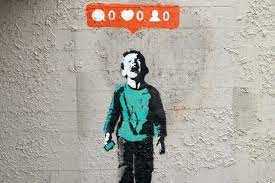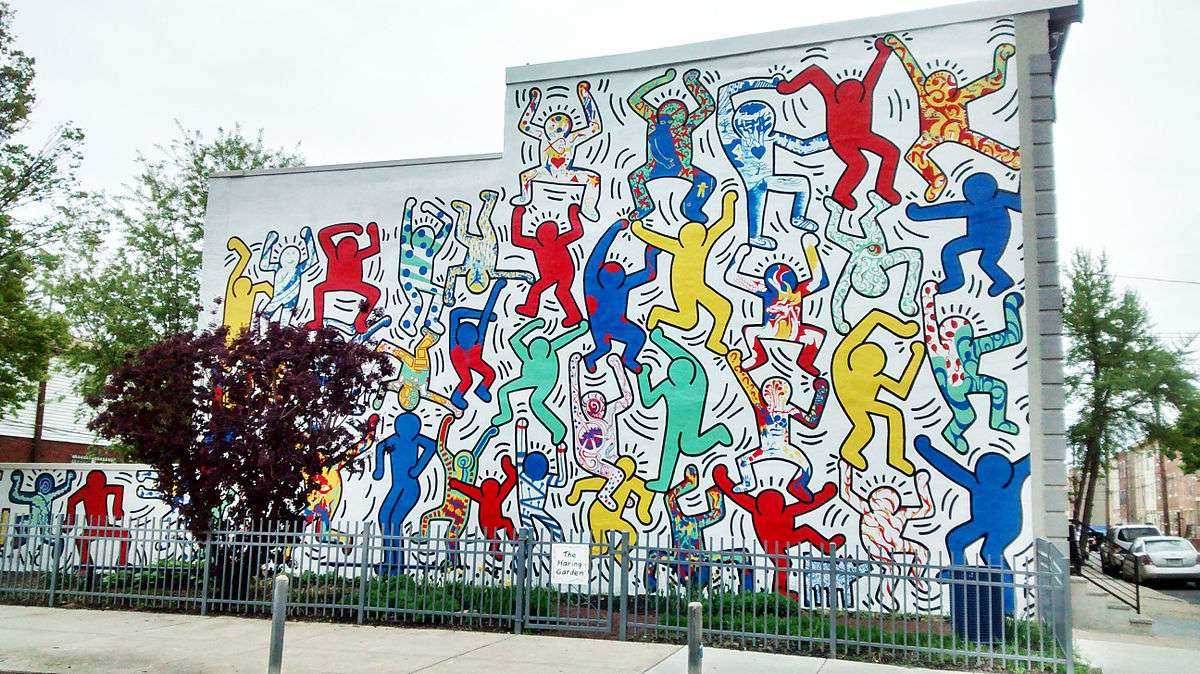
Street art has long been a medium for self-expression and cultural commentary in urban environments. From large-scale murals to tiny stencils, street artists have found creative ways to share their messages with the world. One particular style that has gained popularity in recent years is street art cartoon.
Street art cartoon is a unique blend of cartoon imagery and street art techniques. Artists take inspiration from classic cartoons and comics, using bold lines and vibrant colors to create eye-catching pieces. This form of urban art allows artists to communicate their ideas in a fun and accessible way, reaching a broad audience.
One of the key features of street art cartoon is its ability to convey complex ideas through simple imagery. Artists often use iconic characters and symbols to represent larger concepts. These familiar visual cues allow viewers to quickly understand the artist’s message and engage with the artwork on a deeper level.
Street art cartoon is not only visually appealing, but it also has the power to provoke thought and spark conversations. Artists often use their work to address social and political issues, shining a light on topics that are often overlooked or ignored. By combining the whimsical nature of cartoons with thought-provoking content, street art cartoon challenges viewers to question the world around them.
Street art cartoon has a rich and fascinating history that dates back several decades. It emerged as a form of urban art that combines elements of graffiti, pop culture, and cartoon imagery. The origins of street art cartoon can be traced back to the 1960s and 1970s, when artists began using their surroundings as a canvas for self-expression.
Influences from Graffiti
Graffiti played a crucial role in the development of street art cartoon. Graffiti artists were not only creating political statements and tagging their names, but they also started incorporating cartoon characters into their work. These cartoon-inspired graffiti pieces gained popularity due to their relatability and sense of humor, attracting a wider audience to the art form.
Cross-Cultural Influences
Street art cartoon also drew inspiration from popular culture and various art movements. Artists incorporated elements from comic books, movies, and television shows. This cross-cultural influence led to the creation of unique and recognizable cartoon characters that reflected the diverse backgrounds and interests of the artists.
In the 1980s, street art cartoon gained mainstream recognition with the rise of the hip-hop and punk movements. Artists like Keith Haring and Kenny Scharf were at the forefront of this movement, bringing street art cartoon to galleries and museums. Their vibrant and expressive style influenced a new generation of artists, further solidifying street art cartoon as a legitimate art form.
Throughout the years, street art cartoon has continued to evolve and push boundaries. Today, it can be seen in cities around the world, bringing color and creativity to urban landscapes. Artists continue to use cartoon imagery to convey powerful messages and make bold statements, ensuring that street art cartoon remains a vibrant and expressive form of urban art.
Characteristics of Street Art Cartoon
The vibrant and expressive nature of street art cartoon sets it apart from other forms of urban art. Here are some of the key characteristics that define street art cartoon:
1. Playful and humorous: Street art cartoon often incorporates playful and humorous elements, injecting a sense of joy and laughter into urban spaces. Cartoon characters with exaggerated features and quirky personalities are commonly portrayed, appealing to both adults and children.
2. Bold and vivid colors: Street art cartoon embraces the use of bold and vivid colors to create eye-catching visuals. Bright hues are used to bring the characters and scenes to life, capturing the attention of passersby and transforming drab urban environments into vibrant, lively spaces.
3. Narrative storytelling: Street art cartoon often tells a story or conveys a message through its imagery. Whether it’s a simple scene of a character engaged in everyday activities or a more complex narrative, street art cartoon has the ability to communicate ideas and emotions through visual storytelling.
4. Social and political commentary: Street art cartoon is often used as a platform for social and political commentary. Artists may use cartoon characters to address issues such as inequality, environmental concerns, or human rights, prompting viewers to reflect on these important topics.
5. Interactivity and engagement: Street art cartoon encourages interaction and engagement from viewers. Whether it’s taking a photo with a cartoon character or sharing the artwork on social media, street art cartoon creates opportunities for people to connect with the art and become part of the urban landscape.
The Role of Colorful Graffiti
Graffiti has long been a prominent form of street art, providing artists with a medium through which they can express themselves and communicate with their urban surroundings. Colorful graffiti, in particular, plays a crucial role in enhancing the vibrancy and visual appeal of urban spaces.
Adding Brightness and Energy
Colorful graffiti has the power to transform dull and disengaging urban environments into vivid and energetic spaces. By using bright and bold colors, graffiti artists can create eye-catching murals that draw attention and create a sense of visual excitement. This infusion of color can inject life and energy into otherwise monotonous cityscapes, making them more captivating and stimulating.
Expressing Identity and Culture
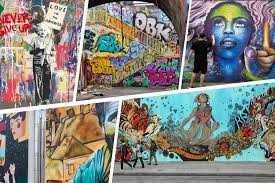
Colorful graffiti often serves as a way for individuals and communities to express their identities and cultures. Through the use of distinct color palettes, symbols, and imagery, artists can convey messages about their heritage, experiences, and values. In this way, colorful graffiti becomes a form of visual storytelling and a means of celebrating diversity and individuality in urban settings.
Inspiring CreativityColorful graffiti can serve as a source of inspiration for aspiring artists and the local community. By showcasing innovative techniques and imaginative designs, graffiti artists can ignite the spark of creativity in others. Viewers may be encouraged to explore their own artistic talents or appreciate the beauty and artistic merit of graffiti as a legitimate art form. |
Creating Social Awareness
Colorful graffiti often tackles social and political issues, using vibrant visuals to convey powerful messages. By addressing topics such as inequality, injustice, or environmental concerns, graffiti can spark conversations and raise awareness within the community. The bold colors and striking imagery demand attention, making it difficult to ignore the pressing issues represented in these artworks. |
Techniques Used in Creating Street Art Cartoons
Creating street art cartoons involves a combination of artistic techniques and expressive forms to bring characters and scenes to life on the urban canvas. Street artists use various methods to create their unique and vibrant artworks, each with their own distinct style and approach.
Spray Painting
One of the most commonly used techniques in street art cartoons is spray painting. Artists use aerosol cans to apply vibrant and detailed colors to the walls and surfaces. They can create different textures and effects by adjusting the pressure and distance of the spray. By layering different colors and shades, they bring depth and dimension to their characters and backgrounds.
Stenciling
Stenciling is another popular technique used in street art cartoons. Artists create stencils, usually made of cardboard or other materials, with intricate designs. They then use spray paint to apply the stencil onto the surface, creating a precise and detailed image. Stencils are a great way to quickly reproduce the same image multiple times and can be used to create repeating patterns or large-scale murals.
Murals and Large-Scale Wall Art
Street art cartoons often involve creating murals and large-scale wall art. Artists use brushes, rollers, and other tools to paint their characters and scenes directly onto the walls. This technique allows for more detailed and intricate designs, as well as the integration of different artistic styles and elements. Murals and large-scale wall art can transform entire neighborhoods and bring a sense of vibrancy and creativity to the urban environment.
Character Design and Illustration
In addition to the techniques above, street art cartoons also rely on strong character design and illustration skills. Artists carefully plan and sketch their characters, paying attention to proportions, facial expressions, and body language. They use bold lines and colors to bring out the personality and emotions of their characters, creating visually striking and expressive artworks.
The Impact of Street Art Cartoons on Urban Spaces
Street art cartoons have had a significant impact on urban spaces, transforming them into vibrant and expressive environments. These colorful and playful artworks have the ability to engage and captivate viewers of all ages, adding a sense of wonder and delight to the otherwise mundane cityscape.
One of the key impacts of street art cartoons is their ability to bring humor and satire to urban spaces. Through clever and witty visual storytelling, these artworks often address social and political issues, sparking conversations and challenging the status quo. By injecting humor into typically serious or dull environments, street art cartoons have the power to disrupt and provoke thought, making viewers question the world around them.
Another significant impact of street art cartoons is their ability to repurpose and reclaim urban spaces. Often created in neglected or overlooked areas of the city, these artworks can breathe new life into abandoned buildings, empty walls, and forgotten corners. By transforming these spaces into colorful and engaging canvases, street art cartoons have the power to create a sense of community and belonging, turning otherwise desolate areas into destinations for locals and tourists alike.
| Impact | Description |
|---|---|
| Engagement | Street art cartoons can engage and captivate viewers, bringing a sense of wonder and delight to urban spaces. |
| Humor and Satire | Street art cartoons often address social and political issues with clever visual storytelling, sparking conversations and challenging norms. |
| Repurposing Urban Spaces | Street art cartoons can transform neglected areas into vibrant and engaging destinations, creating a sense of community and belonging. |
The Role of Street Art Cartoons in Urban Revitalization
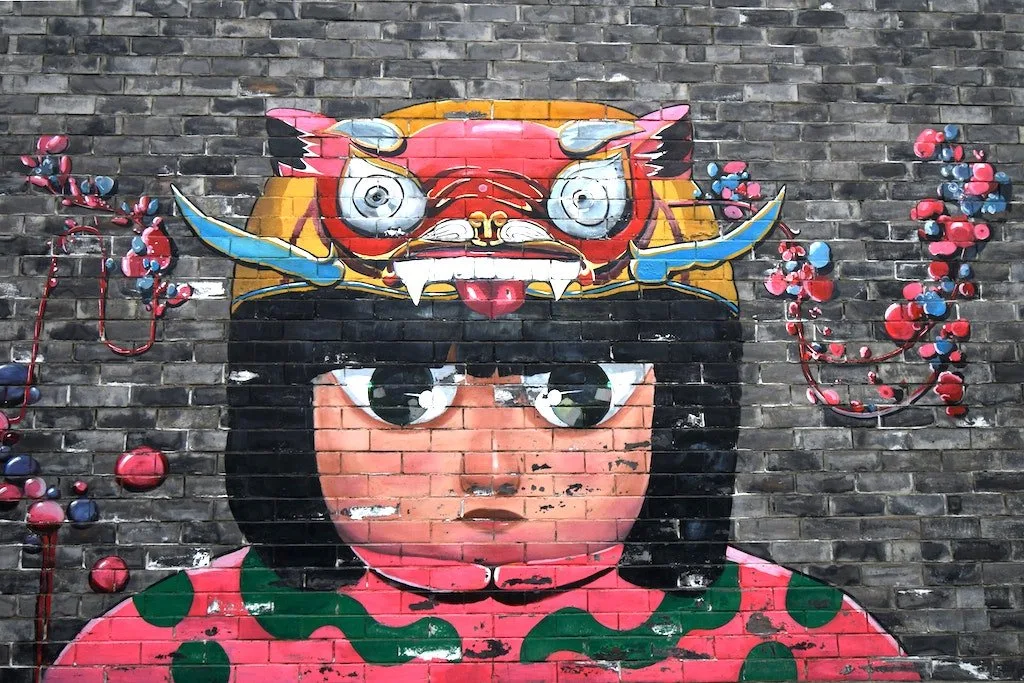
One of the most significant roles of street art cartoons in urban spaces is their contribution to revitalization efforts. By injecting color, creativity, and expression into once forgotten areas, these artworks can attract new visitors, businesses, and investments. They create a unique and authentic identity for a neighborhood or city, drawing attention and drawing people in. The presence of street art cartoons can improve the quality of life for residents, making the urban environment more visually stimulating and inspiring.
The Challenges and Controversies Surrounding Street Art Cartoons
While street art cartoons have gained widespread popularity and admiration, they are not without their challenges and controversies. One of the main concerns is the issue of legality. Many street art cartoons are created without permission, constituting vandalism in the eyes of the law. This can lead to clashes between urban artists and authorities, with artworks being removed or painted over. Additionally, there is often a debate surrounding the line between street art and graffiti, with some viewing street art cartoons as a form of vandalism and others seeing them as valuable artistic expressions.
Evolution of Street Art Cartoons into Murals
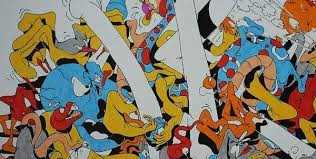
Street art cartoons have come a long way from being small-scale drawings on walls to becoming large-scale murals that dominate the urban landscape. The evolution of street art cartoons into murals is a testament to the growing influence of this art form and its ability to communicate powerful messages.
From Subcultures to Mainstream
In the past, street art cartoons were mainly associated with subcultures and underground movements. They were seen as rebellious and often illegal expressions of creativity. However, as the popularity of street art grew, so did its acceptance in mainstream society. Artists began to create larger and more elaborate pieces, transforming simple cartoons into intricate murals that captivated audiences.
Today, street art murals can be found in cities around the world, adorning buildings, walls, and even entire neighborhoods. These murals have become an integral part of the urban landscape, turning once dreary streets into vibrant outdoor art galleries.
Powerful and Expressive Messages
While street art cartoons were originally created for their aesthetic appeal, they have evolved into powerful means of communication. Murals often serve as a medium for artists to express their views on social, political, and environmental issues. They tackle topics such as inequality, climate change, and human rights, using bold and thought-provoking imagery.
The evolution of street art cartoons into murals has allowed artists to create art that not only beautifies the urban environment but also serves as a form of activism. These murals often spark conversations and ignite change, making them an essential part of the modern urban experience.
Conclusion
The evolution of street art cartoons into murals is a testament to the power of this art form to transform and inspire. From its origins in subcultures to its widespread acceptance in mainstream society, street art has risen to become a vibrant and expressive form of urban art. The messages conveyed through these murals have the potential to provoke thought and instigate positive change.
Disclaimer: This text is for informational purposes only and does not constitute legal or professional advice.
Spray Paint Stencil Technique in Street Art Cartoons
The spray paint stencil technique is a popular method used by street artists to create vibrant and expressive cartoons in urban settings. This technique involves using stencils to spray paint various cartoon characters onto walls, buildings, or other surfaces.
With this technique, artists can quickly and precisely create detailed and intricate cartoon designs. They can also easily reproduce the same design multiple times, allowing for the widespread dissemination of their art.
Creating Stencils
The first step in utilizing the spray paint stencil technique is creating a stencil. Artists can either draw their design directly onto a sheet of material like cardboard or use a computer program to create a digital design that can be printed and cut out.
Once the design is ready, the artist carefully cuts out the desired areas of the stencil, leaving behind the negative space that will be used for spraying the paint.
Application of Spray Paint
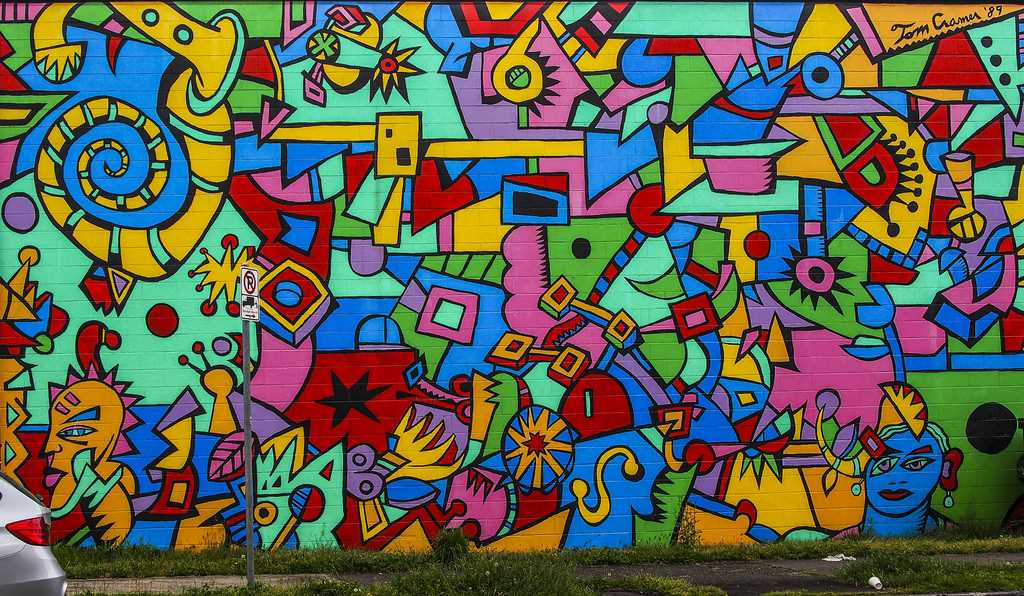
After the stencil is prepared, the artist secures it to the desired surface using tape or adhesive. They then use spray paint cans to apply the paint over the stencil, carefully spraying within the designated areas.
Using different colors and layering techniques, artists can add depth and dimension to their cartoon creations. By adjusting the distance and angle of the spray can, they can achieve various textures and effects.
| Advantages | Disadvantages |
|---|---|
| Quick and precise creation of cartoon designs | Requires careful preparation and planning |
| Ability to reproduce the same design multiple times | Requires access to appropriate materials and equipment |
| Opportunity for widespread dissemination | Possible issues with legality and vandalism |
The spray paint stencil technique adds a dynamic and visually striking element to street art cartoons. It allows artists to bring their imaginative characters to life on urban surfaces, captivating viewers and contributing to the vibrant and expressive nature of street art.
Famous Street Art Cartoon Artists
Street art cartoons have gained significant popularity in the urban art scene, and there are several renowned artists who have mastered this vibrant and expressive form of art. These artists have not only created captivating artworks but have also played a crucial role in shaping the street art movement worldwide.
Banksy
One of the most famous street art cartoon artists is Banksy. Known for his satirical and politically charged artworks, Banksy has become a household name in the art world. His signature stenciling technique combined with humorous and thought-provoking imagery has earned him worldwide recognition. Banksy’s works often address social and political issues, and his ability to create powerful messages through simple cartoon-like characters has made him a legend in the street art community.
Invader
Another notable street art cartoon artist is Invader. Inspired by the 8-bit video game characters from his childhood, Invader creates pixelated mosaic artworks that he installs in various cities around the world. He is best known for his Space Invader series, which features the iconic alien characters from the popular video game. The combination of nostalgia and street art has made Invader’s works instantly recognizable and highly sought after by art collectors and enthusiasts.
These artists have revolutionized the street art scene, bringing cartoon-like characters to the walls of cities worldwide. Their distinctive styles and unique approaches have made them influential figures in the urban art movement.
With their thought-provoking and visually appealing artworks, these famous street art cartoon artists continue to inspire and captivate audiences around the world.

I am a mural enthusiast and a fervent admirer of street art. Rather than creating murals myself, I am passionate about collecting them. My love for street art knows no bounds. I am dedicated to curating and cherishing these artworks that grace the streets. My collection stands as a testament to my profound appreciation for this form of artistic expression.
read about me

